It is said that there are three things a carpenter will always say there aren't enough of: time to do the project, workspace and clamps. From what I've seen, the problem of clamps isn't site specific, it's universal. There are lots of hats and t-shirts with the slogan "You can never have too many clamps" (You can never have too many clamps), so it has to be taken seriously.🙂 For an experienced carpenter the subject of clamps is certainly no longer unfamiliar. But how to navigate the multitude of patterns if you're a beginner or thinking of repairing the broken chair yourself? Do you really need all kinds of clamps, bench and mobile clamps, pliers and presses? Maybe not all of them, but some of them you really need.
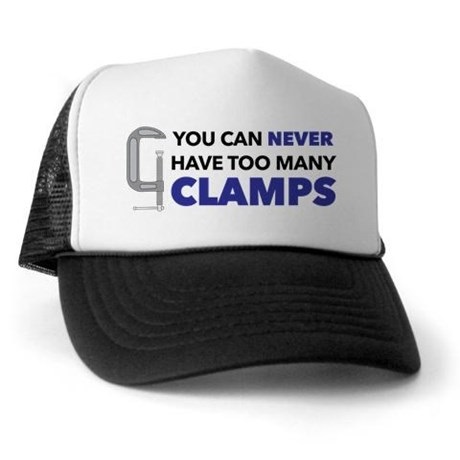
Why they are so useful that they say they are never enough
Clamps are simple little devices that you can't do without. You can't drill a hole properly in a piece of wood if it's not fixed and moving. You can't glue two pieces of wood together without holding them together until the glue hardens, you can't assemble the parts of a piece of furniture without somehow holding them together until they are screwed, stapled or glued. All of this is done with clamps, fixed or movable vises. And they're very useful when you're working alone without help from a colleague.
At industrial level, the best-known version of the large-scale 'vise' is the cold-pressing press for the cold-gluing of solid wood panels. This is the pattern that carpenters have reproduced in their own workshops, fixing the wooden slats with clamps. And since workshops make all sorts of objects in all shapes and sizes, they need clamps of different shapes and sizes to hold them.
Wooden workbenchesThe ones specific to carpentry workshops have built-in vice grips. On the sides of the bench there are wooden screw presses that hold the workpiece so that it can be machined. These also hold the pieces of wood to be clamped.

Types of clamps. Clamping rules
From what I knew from high school mechanics shop the vise was a fixed clamping device and the clamps - movable devices. Now I discover that the names get mixed up, with the term vise also being used for clamps, the fixed one being the bench vise. If you need clamps and want to buy them you will find various models, each in several sizes:
- threaded fastening clamps
- lever clips
- clamp type C
- F-type clamp
- quick-release clamp (press)
- bench vise
- vice with movable heads
- multipoint vise
- steel or cast-iron screw vice
- clamps
Not all clamps can be used for every job. Indeed, there are few types of pliers specialized for a particular type of work. However, the clamps must be chosen in such a way that they are easy to use, provide a good hold on the object, do not damage the object by the pressure applied, and do not shift (slip) during clamping.
You can get good results by following a few simple rules:
- to avoid any marks from the clamping and to spread the force evenly over as large an area as possible, place a piece of wood between the clamping points of the clamp and the pieces of wood that are clamped in place
- always make sure that the clamp is perfectly perpendicular to the surface of the object to avoid slipping
- to prevent the object from becoming unbalanced and rotating, use at least 2 clamping clips
- don't over-tighten the clamp as you can damage the clamping device by applying too much pressure.
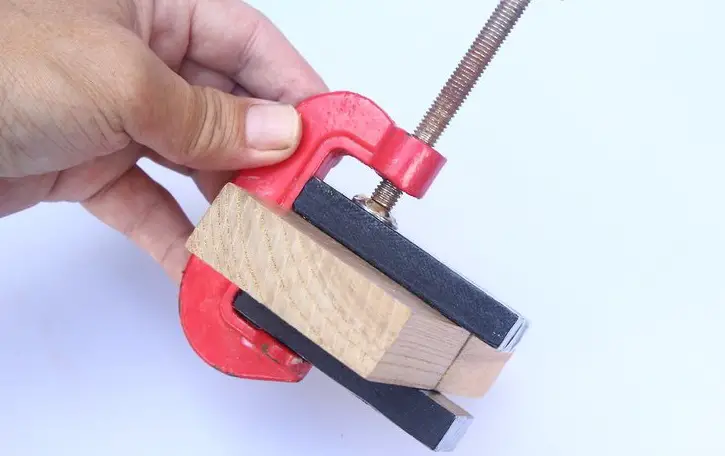
photo source: wikihow.it
Most used types of clamps
As I said there are many kinds of clamps, but not all of them are widely used. The most common workshop clamps are:
Type C clamp. They are called this because of the fixed frame in the shape of the letter C. It is the standard, simple and very popular clamp. Virtually all "collections" of clamps start with this type. They are clamps with sufficient clamping force to hold an object fixed to a surface in such a way that it can be acted on (drilled or threaded, for example). It can even clamp objects that do not have a perfectly flat surface. But they are heavy and not very easy to handle. C-clamps are cheap and can be used for both wood and metal. They come in different sizes and it's a good idea to have 2 of each size you want to buy.
F-type clamp. It is also called this because of its similarity to that letter. It is widely used in the wood industry for joining solid wood panels. They have a variable opening and can clamp, depending on the size, from very small pieces to panels more than 1 m wide. The force applied to the piece after clamping is lower than that developed by a C-clamp. They are also called parallel clamps.
A variant of F-clamps are quick-release clamps. They are very popular, they tighten and release very quickly. This is done by operating the handle which works like a plunger.
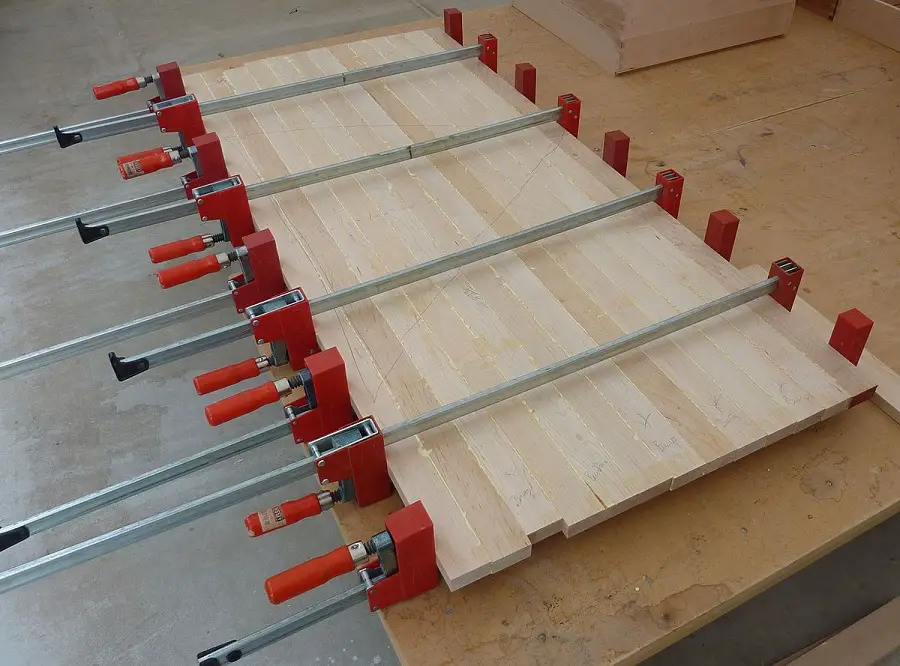
photo source: wikipedia.org
Multi-angle or corner clamps. There are special clamps to fix the corners. There are also special versions for frames so that the 4 corners are fixed exactly at 90°.
Wooden screw clamps. These are the clamps traditionally used in the wood industry. Many carpenters still make them themselves. They are light, easy to use, and hold the work without developing as much pressure as other types.
Clști. They are the simplest and cheapest way of clamping. The force applied cannot be varied being that given by the spring of the pliers. They are easy to use and are very good for holding 2 pieces of wood together for a period. If the pieces are small, they can be replaced with clothes pegs attached with elastic to provide the necessary grip.
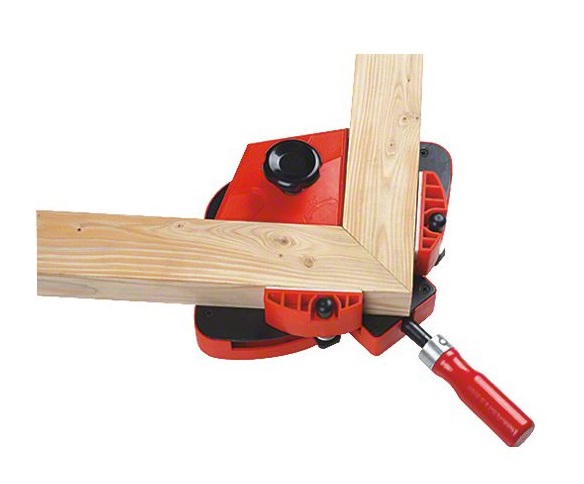
photo source: uni-max.cz

photo source: ericschaeferguitars.com
What carpenters recommend
Some carpenters recommend making your own clamps. It can make sense when you're talking about keen carpenters who are used to making their own tools. For others, the investment is so small that it's not worth the effort.
I've asked several carpenters to tell me roughly how one should start, what an amateur carpenter should buy when he decides to equip his workshop with clamps. In summary the answer would be this:
- 6 x 1.5 m F-type clamps
- 6 solid C-clamps 25-30 cm
- 2 corner clamps
- 10-15 pliers of different sizes.
Such an investment should not amount to more than 2000-2500 lei, but it will be made for life because clamps are very durable devices.
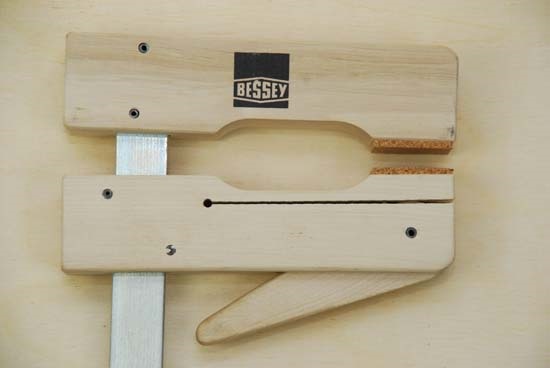
photo source: dielna.practiky.sk
























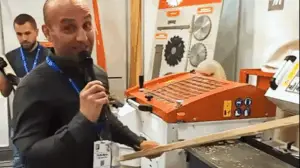
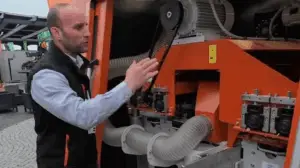









Hi ...what price are the wooden fasteners?...I would like 10 pieces....thanks
Actually, in Romanian we call them "strangatoare" - plural, "strangator" - singular
[...] component parts with D3 adhesive and the use of clamps and presses to secure joints at the right angle [...]